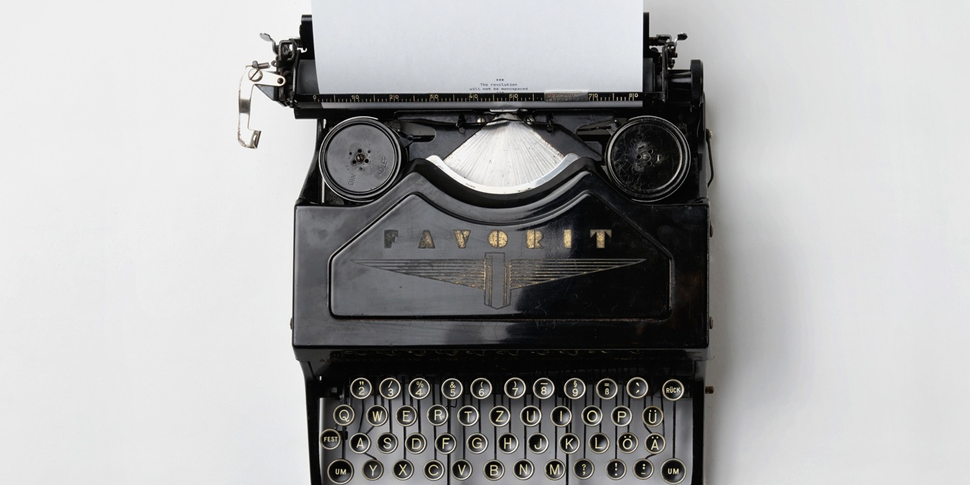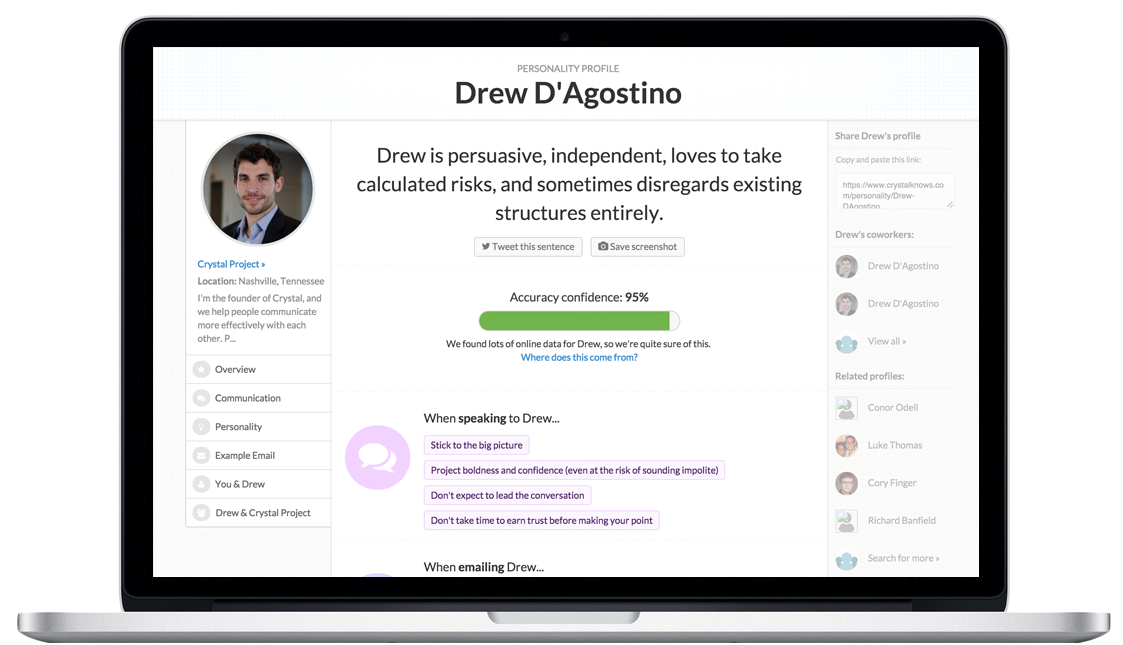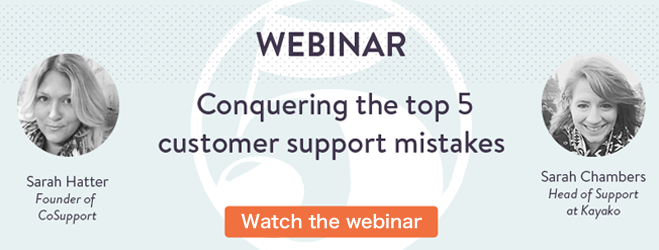Let’s talk about how writing emails is so anxiety-inducing for some people that it caused at least one person to go invent an algorithm to figure out how to write an email based on 64 personality types. (I’m talking about Crystal. More on this later.)
We’ve written a lot of emails over 13 years here at Kayako – specifically customer support emails – and nothing takes the anxiety out of writing a perfect email like doing it everyday with customers at various stages of rage, patience, and technical ability.
Support reps are really good at writing emails because they usually have exceptional emotional intelligence, which means they’re great at picking up on cues. They also get a lot of practice handling all kinds of personality types: happy people, sad people, crazy people – often in a span of a few hours.
If there’s anyone who you can count on to write a solid, well-worded perfect email, it’s customer support reps. But the good news is that you can join their ranks as masters of the written word. Or at least write more impressive emails.
Writing a good email is about two things: knowing who you’re writing to and using smart shortcuts to save your mental energy for the message itself.
If writing emails gives you anxiety, then try these tools and resources for fit. Whether you’re working in customer support, managing accounts or out to make sales, they take most of the guesswork and effort out of the equation.
So sit back and focus on what you want to say – and you’ll be able to say it well!
Tools that tell you who your audience is
Full Contact for Gmail – One of American author Kurt Vonnegut’s cardinal rules of writing was, “Write to please just one person.” But which person?!
FullContact answers that for you. This little inbox helper sits at the side of your email and tells you who you’re writing to by pulling in your recipient’s details from around the web. Now you have context, like social info, job title, location and a place to keep notes on them. That should make it easier to put a face to your reader.

Yesware – Yesware is a godsend for sales teams, answering the question of the century: are people actually opening my emails? And if they are, where? When? Once you know someone has opened your email (or sent it around to their friends) that’s a perfect time to follow up. You know they are engaged. It also helps you jump to conclusions around why someone didn’t respond to your email. (Use with caution!)
Charlie – I was so delighted the first time I got an email from Charlie! Charlie is your automated personal research assistant (I call him my butler). He checks your calendar for meetings and sends you a complete brief on the person you’re meeting with that day. That includes mutual connections, interests, recent blog posts, how their company is doing, and so on. It’s super timely and should give you at least a few clues about your recipient’s general personality, social savvy and if you’re lucky, their current mood.
Crystal – Wired called it creepy. The Next Web called it eerily accurate. But the founders of Crystal say their “proprietary personality detection technology” is nothing to worry about. Crystal is an app that analyzes your writing style from everything you’ve written online – social media, blogs and so on – and draws up a seriously detailed personality profile.
Then it tells you exactly how to write the perfect email to this person. Crystal is impressively accurate. Use the power only for good, people.
Write better, smarter
Grammarly – Who loves grammar? If you don’t, you’ll love what Grammarly does to your workday. When you do your writing in this app it will point out grammar errors, alternative word suggestions and pesky contextual mistakes like “they’re/their/there.” If that’s the kind of stuff you don’t like to worry about, then spot check your writing by copy/pasting it in Grammarly.
Sunrise Meet – “Are you available on Monday between 4-7pm or Tuesday between 1-3pm or….”
Be done with those awful back-and-forths and get to the point. Send meeting invites that let the respondee pick their favorite time slot. It made it to #1 on Product hunt for a reason.
The Readability Test (from The Writer) – There are lots of readability tests online, but I particularly love this one from The Writer because it gives you readability scores on several popular indexes, including the Gunning Fog index and SMOG ( ‘Simple Measure of Gobbledygook.’) Have fun checking where your writing level falls against the BBC and Harry Potter. ( The Writer says that you should aim for a score of around 65 for business writing.)


three.sentenc.es – The Three Sentences mantra isn’t going to work for everyone, but some people it will work like a charm.
The website, ‘three.sentenc.es is a personal policy that all email responses regardless of recipient or subject will be three sentences or less. It’s that simple.‘
Chattier (or less chatty) writers can also try two.sentenc.es, four.sentenc.es, and five.sentenc.es.
Giphy for Gmail – Like GIFs? Of course you do, you’re currently on the internet. Now you can easily include the entire spectrum of human emotion in your emails.
TL;DR (app) – If everyone starts using TL;DR, something awesome will happen. Everyone will get to the point really quickly. This iPhone app takes the first 30 words of your incoming emails and turns them into posts that you can scroll through like a newsfeed. You can reply super quickly too (and only open up the email if you have to.)

Gorgias – Sometimes when I’m stumped on an email, I remember that I’ve already written one just like it. Turning some of my winning emails into templates can save you so much energy.
Seriously, how many times a day can you write “You can find the link to the complete guide here…” anyway?
You can set up keyboard shortcuts and templates with Gorgias, and cut the time it takes you to write an email masterpiece. My favorite feature? Gorgias lets you work with variables like ““Hello firstname”” so you don’t get customers’ names wrong.
Gorgias helps users everywhere avoid carpal tunnel syndrome and avoid getting names wrong.
TextExpander – Use TextExpander to type out your common phrases and replies quickly. This tool also keeps stats of how often you are using each snippet, which can be helpful for support teams to know how often they answer the same question.
For advanced level maneuvers, you can build in rotating snippets that take into account the day of the week and cycle through common sign offs. SupportOps posts their handy advanced signoff clips on GitHub.
Here’s a sample one from Jeff at Intercom:
#! /usr/bin/ruby
STDOUT.write([
“Let me know if you have any other questions.”,
“Don’t hesitate to let me know if you have other questions.”,
“If you think of anything else or have other questions, we’re always here to help.”,
“Feel free to get back in touch if you think of anything else.”].sample)
Learn from the best
Okay, fine, these aren’t really tools. However, these resources do contain helpful information to make your emails clearer, smarter and more engaging.
Really Good Emails – This project is part-swipe folder and part-appreciation society for really good emails. Only the best make it into this super carefully curated portfolio. Check out best in-class emails in a variety of categories, from announcements to customer appreciation.
The Art of Talking Happy [slideshare] – A short and sweet guide to 10 everyday words and phrases to cross out of your vocabulary (along with a happier way to say it.)
The Customer Support Handbook [book] – This book comes from Sarah Hatter’s years of mounting frustration working on hyper-formal customer service teams. Hatter’s book is a goldmine for anyone who wants to write and talk like a real person while delivering awesome, effective, reliable support.
Guide To A Better Email (from Customer.io) – The title says it all. Whether you’re writing a personal email or a segment of people, refer back early and often to this style guide and primer on what makes an email clickable and engaging.
Write Good Emails [infographic] – For the more visual among us, this infographic by WhoIsHostingThis pulls in some serious research (did you know that email takes up 28% of a worker’s time?) and gives us valuable best practices and email manners to live and die by.
Whether it’s profiling, grammar or formality you need – it’s in our list. https://t.co/wyMzW2CVd0 #email #custserv #cx pic.twitter.com/wFuYEY5JER
— Kayako (@Kayako) September 23, 2015
With tools like these, you have more information that you probably know what to do with.
Your challenge? To write beautifully personal emails and have fun doing it. Now over to you: what tools have you found helpful in writing better emails?
Would you like more useful tools just like these? Sign up for our newsletter and get them straight into your inbox.



